[Travel to Wujiang, Jiangsu] Summer vacation vacation, Lili Ancient Town actually has such a treasure museum

During the summer vacation, I found a scenic spot for a family of three to spend the weekend. I had been to most of the surrounding ancient towns. I liked the charm of the ancient town in Jiangnan, but disliked the hustle and bustle of the business. So I came to Lili Ancient Town again. I always miss it. The years here are peaceful!


Starting from Hangzhou in the morning, the whole journey is 120 kilometers, and the driving time is 1.5 hours. You drive through Hangzhou-Ningbo-Shanghai-Kunming and turn to Changtai Expressway. After getting off the expressway at Lili Interchange, continue to drive for about ten minutes to reach the parking lot of Lili Ancient Town Scenic Area Tourist Center. The parking fee is 5 yuan once (day), and it is only two to three hundred meters from the tourist center to the scenic area. Lili Ancient Town is currently open for free, but there are Duanben Garden, Dongshengtang (Jiangnan Folk Museum), Tin Ware Museum, To visit Lili Ancient Town Exhibition Center (Lichuan Garden), Zhougong Fu Temple and other scenic spots, you need to purchase a joint ticket, 60 yuan each.



The two most distinctive attractions of Lili Ancient Town are bridges and alleys. In Jiangnan towns, there are many water bridges. Lili is such an ancient town with many bridges. Listening to the old saying,"There are two bridges when you go out" and "there are two bridges when you go up and down in three steps", it can be seen that there are many bridges in the ancient town. To this day, Lili Ancient Town retains 12 ancient bridges, 8 of which are original ancient bridges.


Lane, in the old days, large families wanted to own the entire alley in order to be prominent and noble. It was generally called "a certain lane". In Lili, such alleys with surnames account for half of the total number of alleys in the town. Six to seven hundred years of history have passed by. There are still 115 alleys in the town, including 90 hidden alleys and 11 alleys over 100 meters long. There are double alleys with light and dark side by side, and two double alleys with hidden alleys parallel to each other. There are also mother-son alleys and three-way alleys, which can be regarded as the most ancient town in Jiangnan.


This was the first time for Mr. Li to come to Lili Ancient Town, but he was deeply moved by the winding alleys in front of him. He said that this place was too similar to the place where he grew up as a child, but his ancient hometown had long been re-poured with reinforced concrete and was no longer back to what it was like. I urged me to go quickly for breakfast, but he said that I couldn't read the alleys in front of me, because I had never seen such long alleys since I grew up in the city.



In the middle of Lili Ancient Town is a city river. There are wide Langfang on both sides of the river. Green plants are lush here, so even in summer like this, you don't have to worry about being sunburned while walking in the ancient town. The rowing boat shuttles through the river. Occasionally, the breeze blows gently.

The ancient town is built as old as before, retaining many historic architectural imprints. There are bridges and wells from the Song Dynasty, Lingxingmen from the Yuan Dynasty, Hongshou Hall and Jinshi Hall, buildings in the Ming Dynasty. There are more ancient buildings in the Qing Dynasty, including ancestral halls, Zhou Gong Fu Temple, famous gardens, Duanben gardens, library buildings, famous halls, Li Hall, and Dongshengtang Hall, which commemorates celebrities. There are also buildings that combine Chinese and Western cultures, such as the Pidgin Catholic Church and the Shijia House.
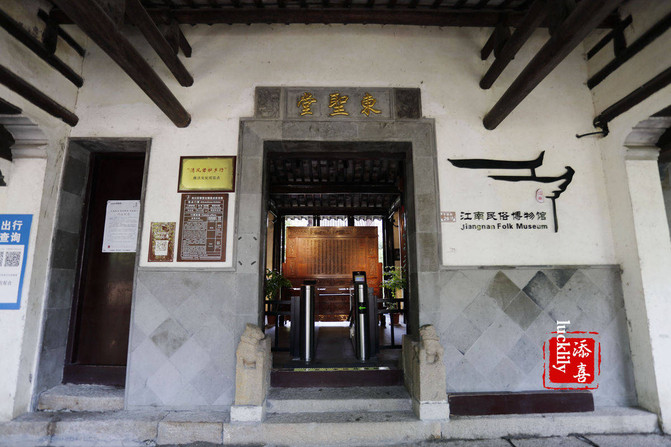
Dongshengtang, is also the Jiangnan Folk Museum. It is one of the attractions in the scenic area that requires ticket checking. The single ticket is 10 yuan. Dongshengtang is located on the east of Pinglou Street in Lili Ancient Town. It was originally known as Puji Zen Temple and was built in the Southern Song Dynasty. Only the wall door, the flat hall and the hatchback building are left, which survived after being renovated in the Ming and Qing Dynasties.

Dongshengtang was built specifically to commemorate Zhao Yulao, the founder of Lili Town in the early Southern Song Dynasty. Zhao Wei was a descendant of Zhao Kuangyin. He began to serve as an official during the reign of Emperor Xiaozong of the Song Dynasty. He served as the prefect of Lin 'an (now Hangzhou), the servant of the Ministry of Power and Industry, and the author of the Secret Pavilion. After the age of 57, he lived in seclusion in Lili Garden Bang. Lao Zhao was also a famous literati during the Southern Song Dynasty. He left behind 18 poems in "All Song Ci", as well as 30 volumes of "Zhuo An Miscellaneous Works" and 4 volumes of "Zhuo An Waiji".


When Lao Zhao came to Lili to live in seclusion, he also did three major things that were beneficial to the people of Lili: first, he mediated the conflict between the local residents of Lili and the immigrants from the north, and upgraded Lili from a village to a township; second, he managed the Lichuan City River, renovated the street surface, and built red railings in various important places, allowing Lili to become one of the largest towns in Jiangnan; third, he built the first private garden in Wujiang. So after his death, the people of Lili built a special temple in memory of him. Because there are also South Holy Church and North Holy Church in Lili Ancient Town, and the Holy Church dedicated to Lao Zhao is in the east of the town, it is called East Holy Church.

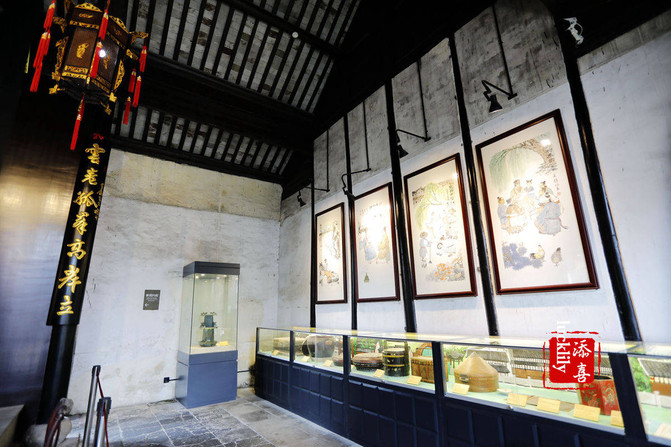


Now Dongshengtang is also the Jiangnan Folk Museum, which displays the collections of farming supplies, marriage customs, cooking, etc. from the homes of residents in the ancient water town.


On the second floor, there is also an elegant and unique piano and chess study room, which is admirable.
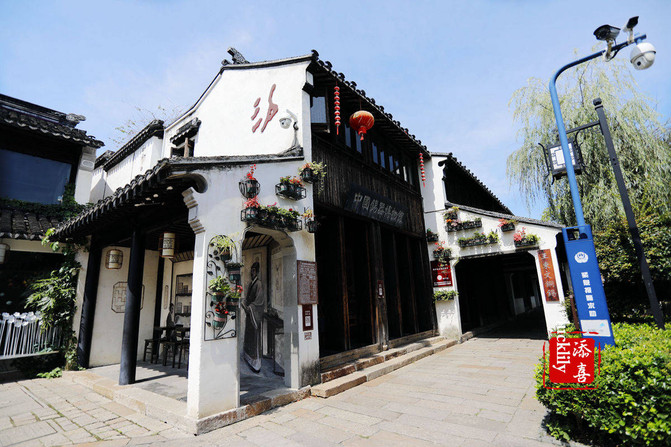

China Tin Museum, everyone knows that Suzhou is the most popular tin ware in the world, but most of them don't know that most of the tin masters come from Lili. The China Tin Museum is located in Mao Zhai, a well-preserved ancient Ming Dynasty building on the central street of the ancient town. The building is simple and powerful, and was built by Mao Daheng, the owner of the original house. The Mao family has been loyal and kind from generation to generation, and talents have emerged in large numbers. Maojia Lane, where Mao Zhai is located, is more than 80 meters long. In the Ming Dynasty, 4 Jinshi and many Juche were born.


The Mao House has four entrances to the front and back, covering an area of 1500 square meters. It houses more than 1000 sets of tinware cultural relics from all over the country. It is currently the largest tinware museum in China. The museum consists of a preface hall, a scene restoration area, a tableware tin products display area, a tea set tin products display area, a wine utensils tin products display area, a boudoir tin products display area, a cultural room tin products display area, etc., truly displaying tin mining, tin smelting, tin processing and other characteristic culture.

This year, the precious tin ware of the town museum,"Yipin Pot", was brought back from the UK by the curator at a cost of 150,000 yuan. He once went to the Palace Museum to participate in the National Treasure Exhibition.

The Tin Ware Museum not only displays, but also has classrooms that interact with tourists. Here, you can watch the on-site productions of old craftsmen and experience them for yourself. It is very meaningful.


Liuyue Museum,Be sure to visit this Liuyue Museum when you come to Lili Ancient Town. It will definitely shock you! Liuyue Museum is very close to the ancient town, about ten minutes 'walk away.

Let me first introduce the origin of the Liuyue Museum. It is very rare that the founder of the museum, Mr. Du Weiming, who is from the United States, happened to be here that day. Yes, the founder of this museum with a strong national style is actually an American! After he came to China, he fell in love with Chinese folk customs and discovered artistic treasures in those old buildings that were about to be demolished! In the past 40 years, he has collected more than 100,000 Chinese folk objects, and more than 40,000 are displayed in the Liuyue Museum.


Entering the first floor of the museum, one side of the magnificent hall is the Wanfo Grottoes, which is awe-inspiring. The entire museum's day reading process will be full of respect!


Antique shrines and ancient temple art decorations all come from temples, ancestral shrines, mansions and private houses in the Ming and Qing dynasties. They are extremely rare among the people of our country.


The museum exhibition area has six floors. We visited it from top to bottom. Currently, the fifth and second floors are being renovated and arranged for exhibitions. Liuyue Museum has completed more than ten exhibition halls, each with one display, such as wood carvings, Buddha statues, Buddhist shrines, plaques, and gift boxes. It takes about 20-30 minutes to visit each floor without stopping. If you take a slow look, the entire museum may not be able to see it in a day.



Among the displays are official boxes, bamboo weaving utensils, home halls, sedan chairs, chopsticks and chopsticks, carpentry tools, washstand, screens, children's boxes and buckets, masks, portraits of opera characters, wooden windows of various colors, traditional Chinese medicine drawer boxes, there are also various stone carvings, brick carvings, couplets, etc. What is amazing is that each series of displays, such as washstand, can have hundreds of different styles, covering several exhibition halls.



Liuyue Museum is located at No. 1 Renmin East Road adjacent to Lili Ancient Town. Tickets need to be purchased separately. Tickets are 100 yuan. The museum's opening hours are 10:00-16:00.
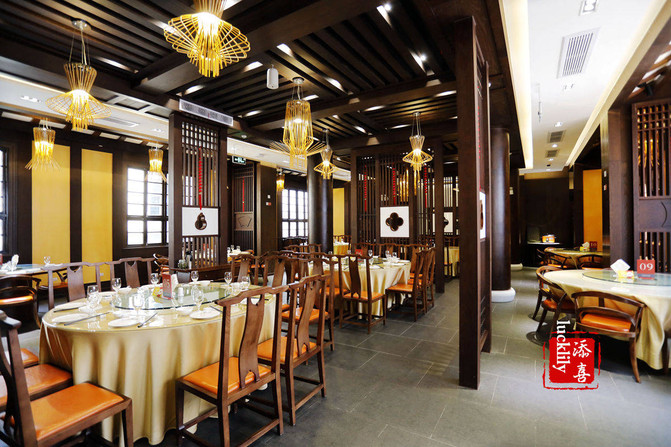
Recommended restaurant: Xie Shunxing Hotel,This is the newly opened branch of Wujiang's century-old restaurant in Lili Ancient Town. It is located adjacent to the former residence of Liu Yazi, a "National Key Cultural Relics Protection Unit". The whole style is also ancient and antique. It is a hotel transformed from many buildings in the late Qing Dynasty and the early Republic of China and Jiangnan courtyards.


Authentic Xieshun Xing family banquet dishes: pickled duck, fried shrimp, fried pork with tea tree mushroom, eel segments, white water fish;


Shao three delicacies, stewed pork with rice straw, June yellow, fried lotus root strips, water shield fish round soup... Serve fruit plates and green tea immediately after your seat, and then serve a bowl of pickled vegetable shredded pork noodles for the main course after the meal. It is delicious and it is really delicious!

Recommended accommodation: Xieshun Xing


After eating at Xieshun Xing Hotel, I found that the hotel still had accommodation. There was an exquisite courtyard on the first floor and a fashionable tea house on the second floor.
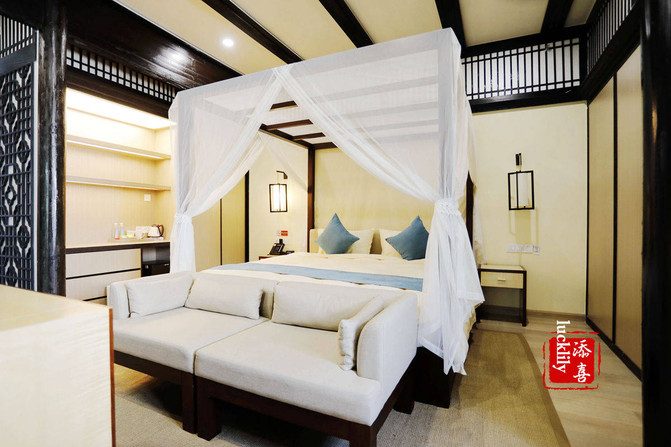

I really like the beautiful room layout, first-line brand furniture and bathroom facilities, comfortable and comfortable private space, and immersive ancient town life.
Xieshun Xing Hotel Ctrip booking link:
https://hotels.ctrip.com/hotels/detail/? hotelId=77191506&checkIn=2021-07-13&checkOut=2021-07-14&cityId=14&minprice=&mincurr=&adult=1&children=0&ages=&crn=1&curr=&fgt=&stand=&stdcode=&hpaopts=&mproom=&ouid=&shoppingid=&roomkey=&highprice=-1&lowprice=0&showtotalamt=&hotelUniqueKey=
Previous Article:Qionglong Mountain, the first peak in Suzhou (4)
Next Article:Enjoying Jiangnan, visiting Zhouzhuang at night and encountering a Mid-Autumn Festival Lantern Festival
